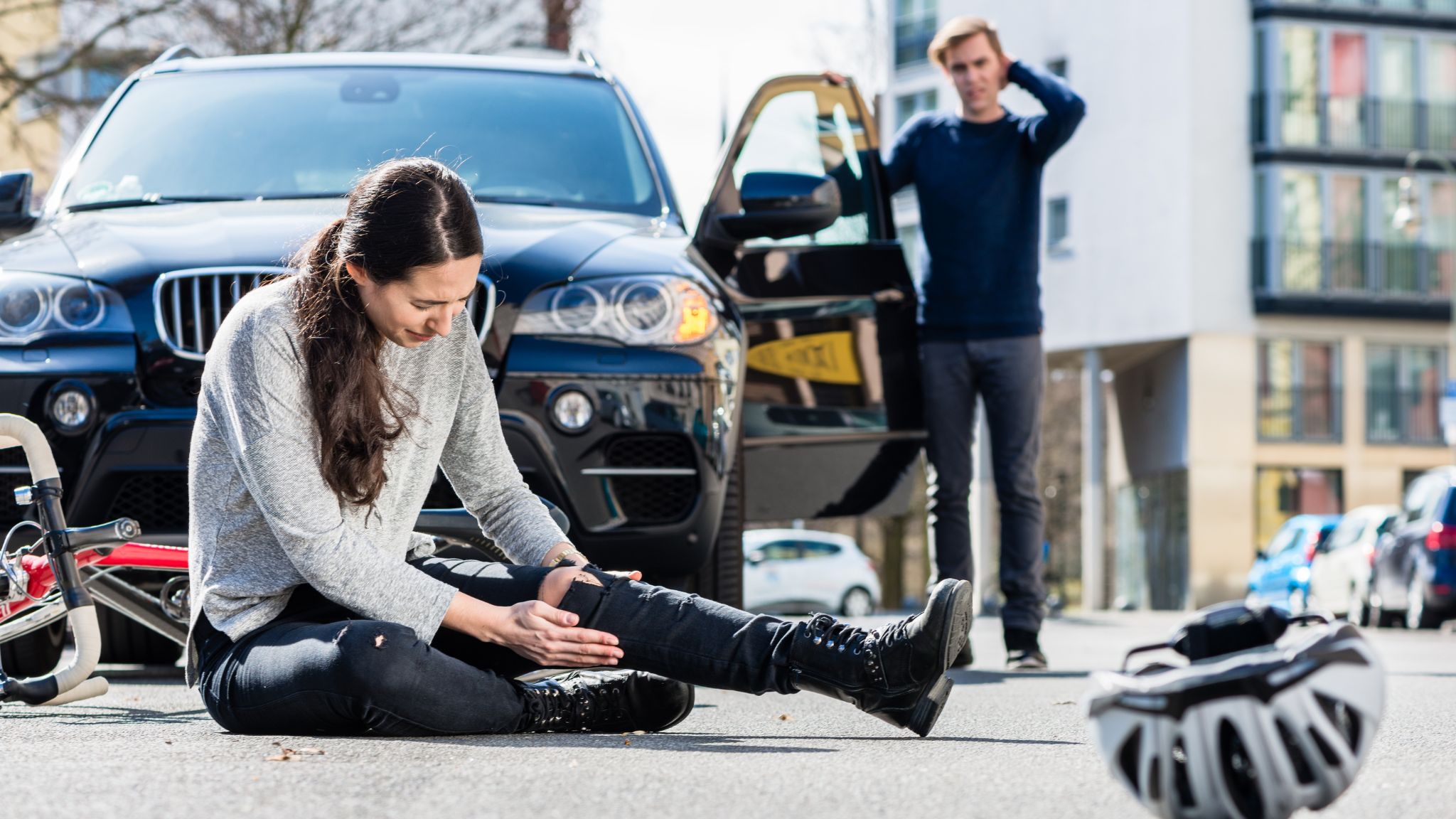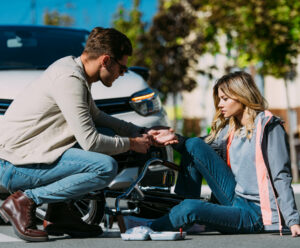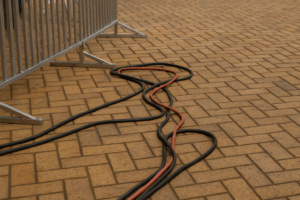
Back-to-school season means packed drop-off lanes, crowded intersections, and thousands of new teen drivers hitting the road. It’s also one of the riskiest times of year for young drivers.
According to the National Highway Traffic Safety Administration (NHTSA), teen motor-vehicle occupant deaths climbed for the third year in a row, with 2,707 fatalities in 2023, nearly six each day. When including pedestrians and bicyclists, the total teen death toll reached 3,048.
Crashes involving teens affect far more than just the drivers themselves. In 2023, collisions involving young drivers (ages 15 to 20) claimed 5,588 lives nationwide. Of those, only 38% were the teen drivers, the rest were passengers, people in other vehicles, and pedestrians. These numbers show why parents, schools, and communities need to take safety seriously during the school year.
In this article, we’ll cover practical safety tips for reducing teen crash risks and outline the legal steps families can take if tragedy strikes, including when to call a teen driver car accident lawyer for help.
Teen drivers face more dangers than adults because their brains are still developing and they lack real-world driving experience. Understanding these risks helps teens and parents work together to create safer driving habits.
The teenage brain works differently than an adult brain, especially when it comes to making quick decisions and judging risk. The part of the brain responsible for evaluating danger and controlling impulses doesn’t fully develop until around age 25. This means teens naturally struggle more with recognizing dangerous situations and making smart split-second decisions.
Many teens also tend to be overconfident about their driving abilities. They might think they can handle situations that would challenge even experienced drivers. This overconfidence, combined with underdeveloped risk assessment skills, creates a dangerous combination on the road.
Even teens who passed driver’s education and their driving test still lack the thousands of hours of experience that help adult drivers automatically respond to dangerous situations. Experienced drivers develop pattern recognition skills that let them spot potential problems before they become emergencies.
New drivers haven’t had time to build this automatic response system. They also haven’t experienced many different driving conditions like heavy rain, construction zones, or emergency vehicle situations. Each new challenge requires their full attention and careful decision-making.
Having friends in the car creates serious safety risks that many families don’t fully understand. When teens drive with peer passengers, they’re more likely to engage in risky behaviors like speeding, racing, or showing off. Sometimes the presence of friends triggers a psychological response that prioritizes social approval over safety.
Beyond the obvious problem of limited visibility, nighttime driving often happens when teens are tired, returning from social events, or dealing with emotional situations that affect their judgment.
Teens also have less experience with night driving conditions. They may not know how to adjust their speed and following distance for reduced visibility, and they haven’t learned to watch for the reflective eyes of animals or pedestrians wearing dark clothing.
Modern smartphones create distraction temptations that previous generations of teen drivers never faced. The constant connectivity of social media, texting, and apps means teens feel pressure to stay connected even while driving. Notifications and text messages create strong urges to look away from the road.
Even when teens try to use technology safely, devices like GPS systems and music streaming can create mental distractions that affect driving performance. The key is understanding that any technology that takes mental attention away from driving increases crash risk.
Understanding the most common mistakes helps teens avoid the violations that lead to accidents and tickets. These violations show up repeatedly in teen driving records and crash reports:
Speeding causes more teen accidents than any other traffic violation. However, teen speeding problems go beyond just driving over the posted limit. Many teens fail to adjust their speed for different conditions like school zones, residential areas, bad weather, or heavy traffic.
Time pressure plays a major role in teen speeding violations. When teens leave late for school or social events, they try to make up time by driving faster. This creates a dangerous cycle where poor time management leads to risky driving decisions.
Teens also tend to be overconfident about their ability to handle higher speeds. They may not understand that posted speed limits represent the maximum safe speed under ideal conditions, not a target speed to maintain regardless of circumstances. Common speeding scenarios include:
These violations are especially dangerous in school environments where pedestrians and other vehicles create complex traffic situations. Teens often struggle with understanding who has the right of way at intersections, crosswalks, and merge points.
School areas present particular challenges because they include crossing guards, school buses, and pedestrian traffic that follow different rules than normal traffic flow. New drivers may not recognize these special situations or understand how to respond appropriately.
As mentioned, phone-related violations continue growing as smartphone technology becomes more advanced and addictive. Teen violations include texting while driving, checking social media apps, adjusting GPS systems, and selecting music, all activities that take eyes and attention away from the road.
The danger extends beyond just visual distraction. Research shows that mental attention devoted to phone conversations or text composition significantly impairs driving performance, even when teens maintain visual contact with the road.
According to NHTSA, using a phone while driving at 55 mph for just 5 seconds means traveling the length of a football field without watching the road. For teen drivers who already have slower reaction times due to inexperience, this creates an extremely dangerous situation.
Tailgating is common among inexperienced drivers who don’t understand the relationship between speed, stopping distance, and reaction time. Teen drivers often follow other vehicles too closely, especially in stop-and-go school traffic where they need extra space to react safely.
New drivers also feel pressure to “keep up” with faster, more experienced drivers, not realizing that their inexperience actually requires larger safety margins.
This leads to following distances that don’t give them enough time to stop if the vehicle ahead brakes suddenly.
When a crash happens involving a teen driver, the moments immediately after the collision are critical for everyone’s safety and protection. Parents need to know the proper steps to take, while teens benefit from understanding these procedures before they ever get behind the wheel. Here’s what to keep mind of:
The first priority is always personal safety and preventing additional accidents.
If the vehicles are still drivable and blocking traffic, move them to the shoulder or side of the road. Turn on hazard lights immediately and set up flares or reflective triangles if available. Check all occupants for injuries, starting with your teen and any passengers in their vehicle, then checking on people in other cars involved.
Call 911 even for minor accidents. Police reports become important documents for insurance claims and potential legal proceedings. Emergency medical personnel can also evaluate injuries that might not be immediately apparent, especially head trauma or internal injuries that teens might not recognize or report.
Take photographs of all vehicles from multiple angles, showing the damage and the overall accident scene. Capture street signs, traffic lights, road conditions, and any skid marks or debris. Get photos of license plates, driver’s licenses, and insurance cards from all parties involved.
Write down exactly what happened while the details are fresh. Note the time, weather conditions, and any factors that might have contributed to the accident. If there were witnesses, get their contact information and ask them to provide a brief statement about what they saw.
Record the badge numbers and names of responding police officers. Ask how to obtain a copy of the police report once it’s completed. This documentation becomes extremely valuable if disputes arise later about what happened or who was at fault.
Contact your insurance company as soon as possible to report the accident. Many insurers have 24-hour claim reporting hotlines. Provide factual information about what happened, but avoid admitting fault or speculating about causes. Stick to describing the basic facts of the collision.
Be prepared for insurance adjusters to contact you within 24-48 hours. They will want to inspect the damaged vehicles and may ask to take recorded statements from your teen. While you are required to cooperate with your own insurance company, you are not obligated to provide recorded statements to other parties’ insurers without legal representation.
Keep detailed records of all conversations with insurance representatives, including dates, times, and the substance of each discussion. Request written confirmation of any agreements or decisions made during phone conversations.
Even if your teen feels fine immediately after the accident, seek medical evaluation within 24 hours. Adrenaline and shock can mask injuries, and some conditions like concussions or soft tissue damage may not show symptoms right away.
Keep all medical records and receipts related to accident injuries. This includes emergency room visits, doctor appointments, physical therapy, prescription medications, and any medical equipment needed for recovery.
Monitor your teen for delayed symptoms like headaches, neck pain, back pain, or changes in sleep patterns or mood. These can indicate injuries that weren’t apparent at the scene and may require additional medical treatment.
Car accidents can be traumatic experiences for teens, even when physical injuries are minor. Your teen may experience anxiety about driving again, guilt about causing the accident, or fear about facing consequences. Professional counseling can help teens process these emotions and develop healthy coping strategies.
Consider temporarily restricting your teen’s driving privileges while they recover emotionally and while you work through insurance and legal issues. This gives everyone time to process what happened and can help rebuild confidence gradually.
Teen driver accidents can involve complex legal issues, especially when injuries occur or when fault is disputed. Parents need to understand their potential liability exposure, as they can be held financially responsible for damages caused by their minor children.
If anyone involved in the accident was injured, if there are disputes about fault, or if insurance companies are not cooperating fairly, consulting with a car accident attorney becomes important. Legal representation can help protect your family’s financial interests and make sure your teen’s rights are protected throughout the process.
Some situations particularly warrant legal consultation: accidents involving serious injuries, cases where the other party’s insurance company is denying coverage, situations where your teen is being blamed unfairly, or crashes involving uninsured drivers.
An experienced attorney can evaluate the circumstances and advise whether legal action might be necessary.
If your teen has been involved in a car accident, you don’t have to handle the legal and insurance challenges on your own. Thompson Law’s teen driver car accident lawyers have the experience to protect your family’s rights, hold negligent parties accountable, and pursue full compensation for medical bills, lost wages, and long-term needs.
Don’t wait until insurance companies start pushing back. Contact Thompson Law today for a FREE CONSULTATION and get the guidance you need to move forward with confidence. We cover all areas of California, Georgia, Arizona, and Texas.






Thompson Law charges NO FEE unless we obtain a settlement for your case. We’ve put over $1.9 billion in cash settlements in our clients’ pockets. Contact us today for a free, no-obligation consultation to discuss your accident, get your questions answered, and understand your legal options.
State law limits the time you have to file a claim after an injury accident, so call today.